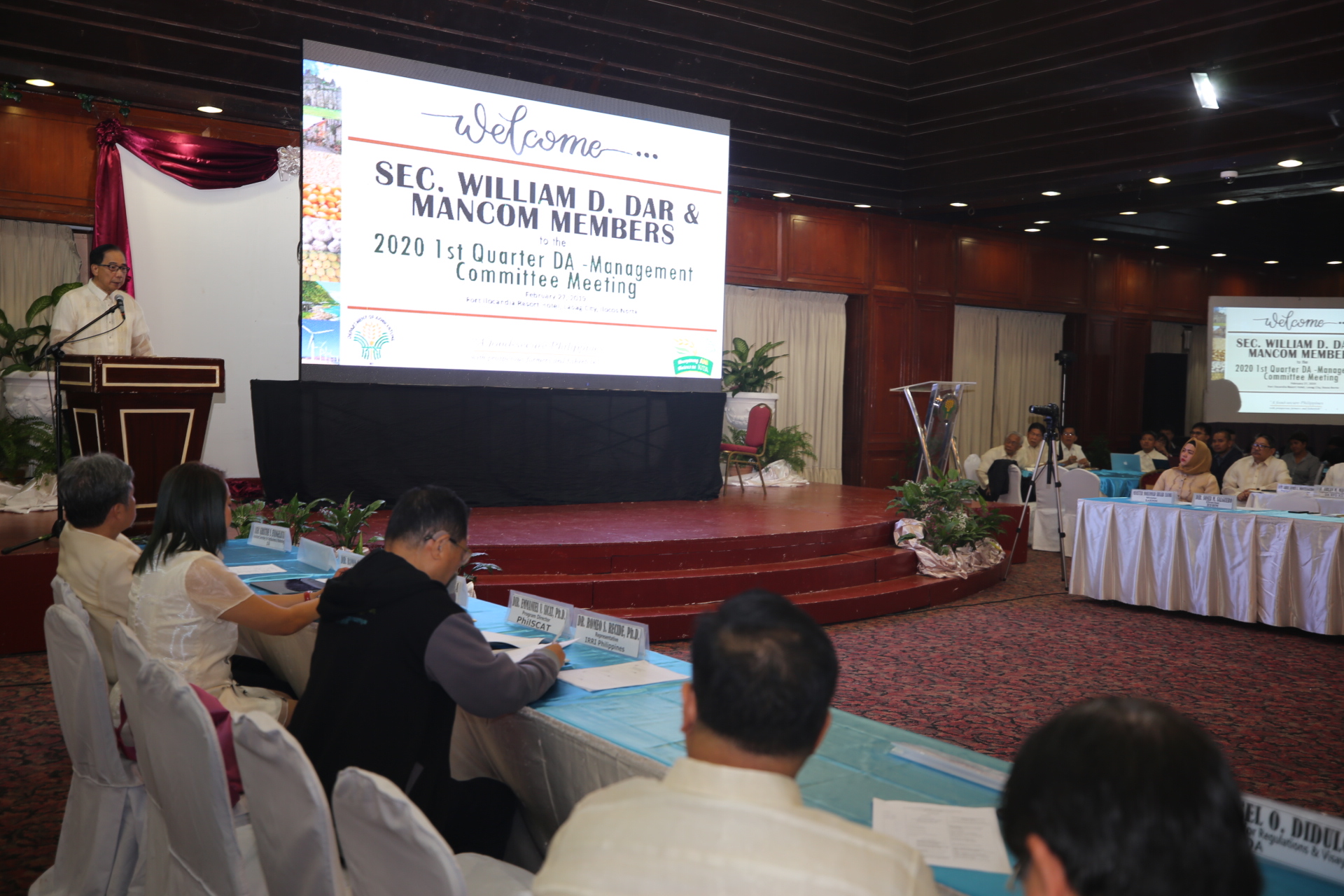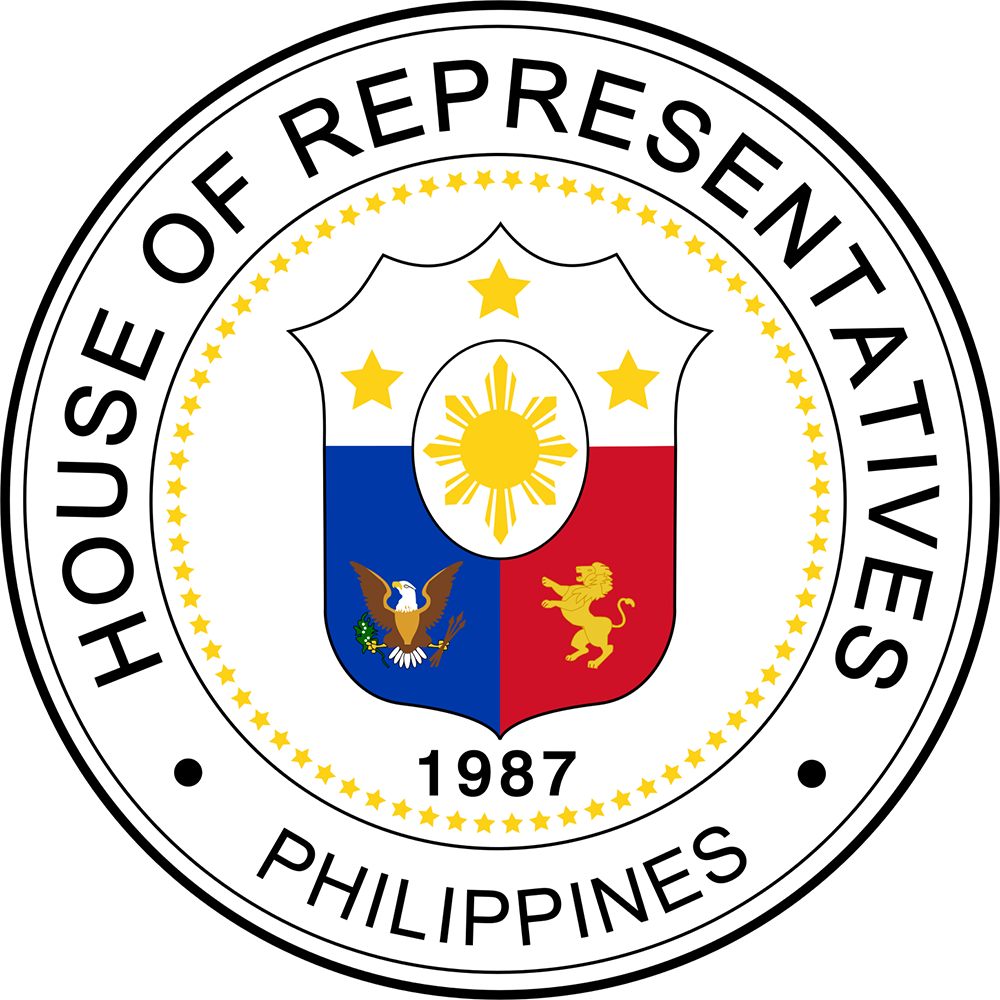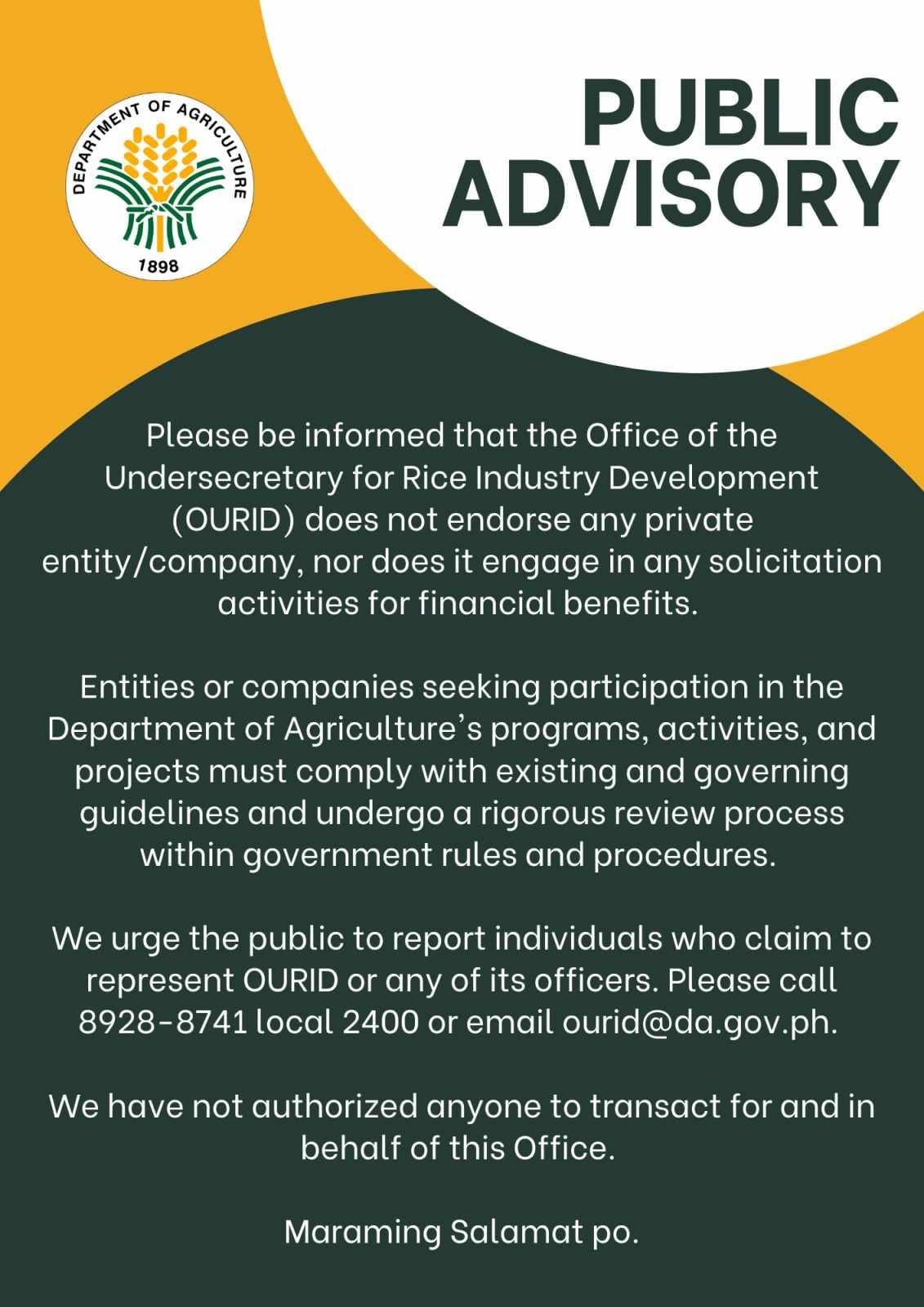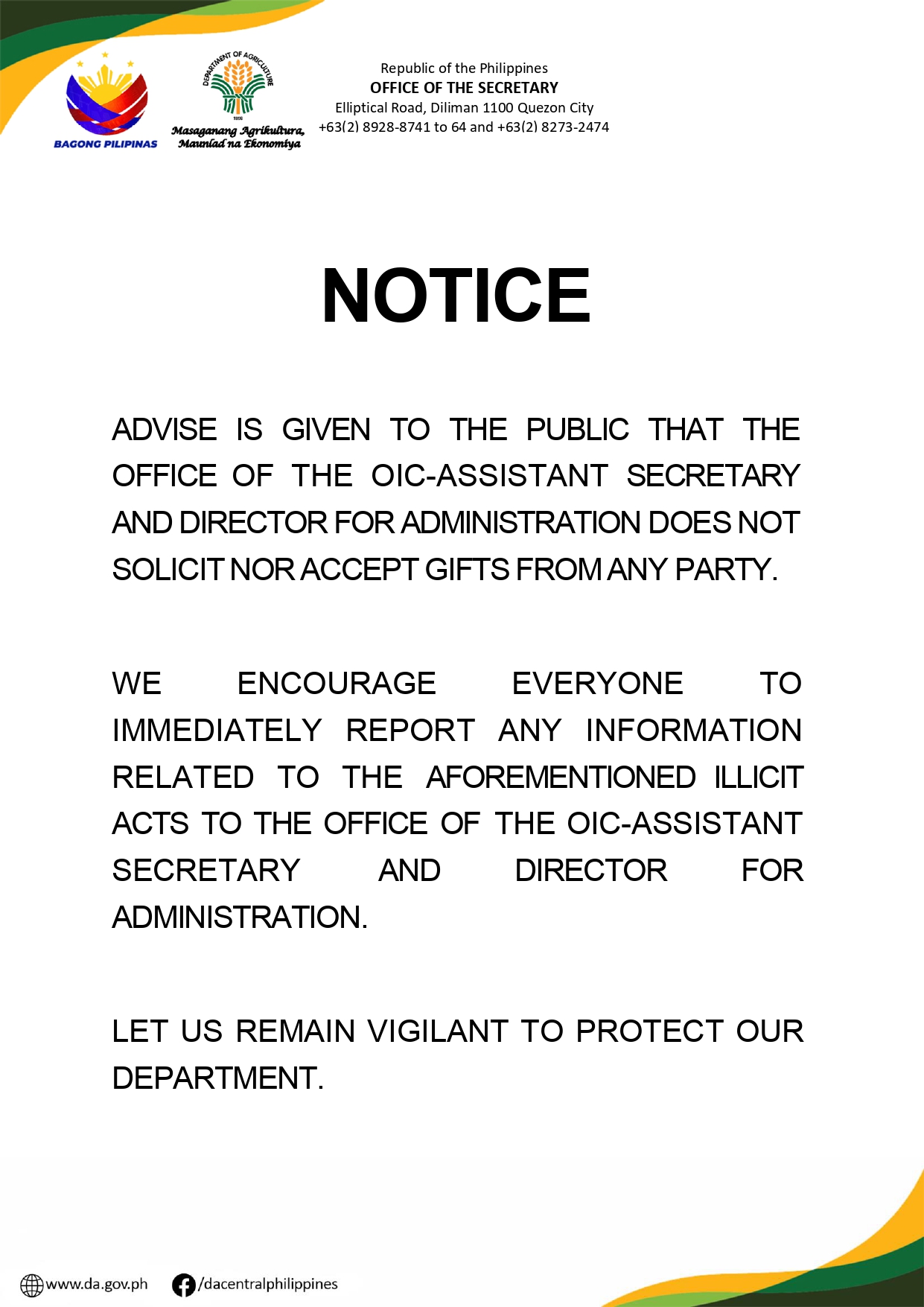
This year and till 2022, the Department of Agriculture (DA) aims to attain a progressive annual growth rate of two, three and four (2, 3 & 4) percent for the agriculture and fishery sector, for the three-year period.
“It will be a tall order, mainly due to natural and man-made calamities that will impact on the production of rice, corn, vegetables, major crops, swine, poultry, and fishery products, but we are confident we could attain such modest growth rates in the next three years,” said Agriculture Secretary William Dar during the DA Management Committee (ManCom) Meeting on February 27, 2020, in Laoag, Ilocos Norte.
He ordered about 80 heads of DA agencies to give their utmost to attain the “2-3-4%” annual growth rates this year up to 2022.
“We must elevate our game, continue to ‘reboot’ ourselves, and strengthen and synchronize our efforts. This will enable us to effectively and cost-efficiently implement programs and projects under our new thinking for agriculture that envisions a food-secure Philippines with prosperous farmers and fisherfolk,” Secretary Dar said.
He added that the DA’s strategies are buttressed on science and statistical analysis, enabling it to map out the progress of the implementation of programs and find other sources of growth.
“As I always emphasize, there is a science behind agriculture. Statistics will not lie. Hindi pwede ang bolahan sa akin because I believe in the power of science and the authority of empirical evidence,” Secretary Dar said.
The DA chief lamented over the continual downward trend of the agriculture sector’s share to the nation’s economy, from 2000 to 2019, where its average contribution to gross domestic product (GDP) slid to 11.6 percent – a stark contrast to the 24-percent contribution to GDP in the 80s.
Further, from 2000 to 2018, the agriculture sector grew at a dismal 1.7 percent annually.
During the nine-year period, the major contributors to the agriculture sector were: palay (19.7%), fisheries (18.5%), livestock (13.8%), and poultry (10.9%), corn (5.6%), banana (4.7%), and coconut (4.1%). Secretary Dar aims to raise the productivity of the palay and fishery sub-sectors, which comprise 40 percent of the total agriculture output.
“A significant increase in the performance of palay and fisheries sub-sectors will definitely have a huge impact in the overall performance of the agriculture sector,” he added.
He urged the DA regional directors to vigorously implement the Rice Competitiveness Enhancement Fund (RCEF) program as it will deliver the much-needed increase in palay production in the next six years.
Secretary Dar said the livestock and poultry sub-sectors will continue to be the pillars of agricultural growth. He said that the poultry and corn sub-sectors, comprising 16 percent of agriculture’s gross value added (GVA), will be given greater attention in view of the adverse impact of the African Swine Fever (ASF) on the livestock sector.
“Once our livestock sub-sector recovers from the scourge of ASF, the three sub-sectors (corn, poultry and livestock) could contribute more to the agriculture GVA,” Secretary Dar added.
He urged the DA-Regional Field Office (RFO) directors to strictly enforce ASF biosecurity measures, set up more stringent quarantine checkpoints in partnership with the local government units (LGUs) and hog industry stakeholders, provide more disinfection facilities, and intensify anti-smuggling and meat inspection efforts—to effectively manage, contain and control the spread of ASF.
“A great disappointment is the performance of our coconut sub-sector,” he said, noting that coconut is planted to more than three million hectares and yet its contribution to agricultural GVA is a just little over four percent.
He is confident that with the new leadership of former Armed Forces of the Philippines (AFP) Chief Benjamin Madrigal of the Philippine Coconut Authority (PCA), the coconut sub-sector will experience high and sustained growth in the next three years.
“Despite the country having one of the largest coastal areas in the world being an archipelagic island, our fishing sub-sector remains in doldrums,” he said.
As such, Dar called on the leadership of the Bureau of Fisheries and Aquatic Resources (BFAR) to come up with a systematic plan to raise the productivity of the fishery sector, noting that contraction in fish production pulls down the entire agriculture sector.
The fishery sub-sector has been consistently a laggard with negative growth rates from 2010 to 2012 and from 2014 to 2018.
As for the export of the high-value crops sector, Secretary Dar noted the urgent need for more dynamic leadership and a systematic plan that will lead to the realization of its full potentials, noting that his predecessors have failed to unleash the potentials of export crops.
Except for banana and pineapple, Dar said that the performance of high-value crops is discouraging.
“We must vigorously support and pursue the production and export of agricultural and fishery commodities that we have a comparative advantage in and strengthen strategic partnerships with major and emerging trading partners and, more importantly, intensify the marketing and promotions of our farm and fishery products worldwide,” he said.
On the erratic growth of the agriculture sector, he said “obviously its performance is highly dependent on the vicissitudes of weather. Thus, better weather prediction strategies for typhoons, El Nino, and La Nina should be strengthened and enhanced.” Secretary Dar earlier ordered the expansion of Adaptation and Mitigation Initiatives in Agriculture (AMIA) strategy to municipal, provincial and regional levels to test climate-resilient agriculture programs.
“We need science-based and evidence-based options and actions that we should provide to all farmers and other agriculture and fishery industry stakeholders. The creation of more AMIA villages is one of the strategies that the DA is adopting to address the challenges of climate change,” he said.
The DA chief underscored the importance of ensuring DA’s major clientele of correct weather information and corresponding farming and fishing advisories to maximize production and minimize losses.
“Under my leadership, we will ensure the installation of resilience-enhancing measures through the use of satellite technology to track weather and climate changes, strengthening our information and education dissemination capability, and the establishment of provincial-led agricultural and fishery extension system,” he said.
The DA will also implement complementary measures to enhance the resilience of the agriculture sector such as greater crop insurance coverage, provision of better logistics in agriculture, and strengthening institutional capacity particularly at the LGU level, Secretary Dar concluded. ###
Reference:
Noel Ocampo Reyes
DA Spokesperson & Asst. Sec
for Comms and Media Affairs
CP: 09204889686 or 09566694611
Phone: 89298183















